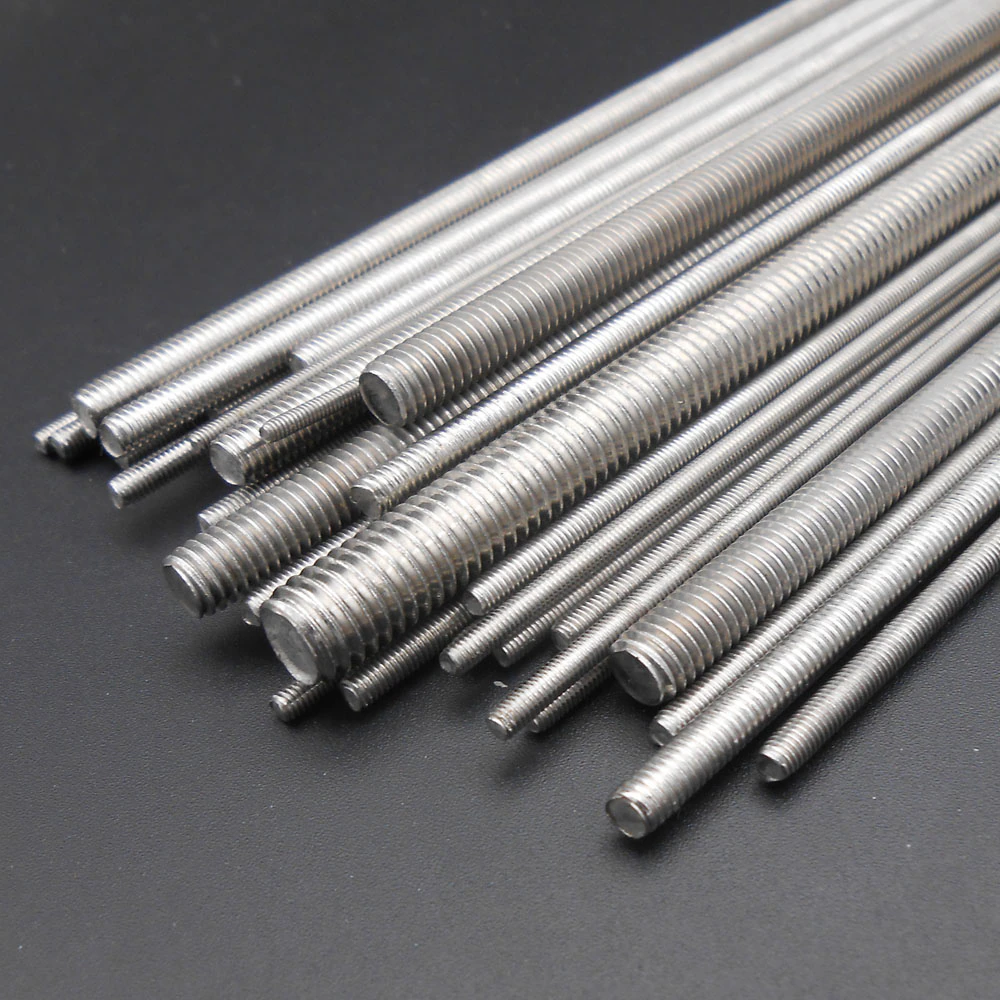DIC is the leading Supplier of Exporters Threaded Rods in India. These Threaded rods are fasteners which are also known as studs. It has a long rod with threads at both ends. There are a variety of threaded rods in which the entire length of the rod is also threaded. The thread allows bolts, nuts, and other fasteners to easily screw onto the rod, adding to its versatility and functionality.
Threaded Rods are often used in construction to create a strong structural connection between two sections of Metal. They are usually found in machine building and other industries where Heavy Loads need to be lifted or moved.

Right Hand Threaded Rod
The most popular type of thread is the right-hand-threaded rod. The threads in it are arranged in a clockwise configuration.
Left Hand Threaded Rod
As left-hand threads are the opposite of right-hand threads, they are also sometimes called “reverse thread screws” although they need turning them clockwise to unfasten them or anticlockwise to secure them.
Common types of threaded rods:
Threaded rods can be categorized according to their functions, features, and applications. In terms of structural elements, there are two most popular types:
Fully Threaded Rod— These types of Threaded Bars feature the threading that runs along the stud’s entire length, allowing Nuts and other Fixings to mate fully at any point along with rods.
Double-End Threaded Rod— These threaded Bars are featured by threading at two ends of the stud, and the center part is not threaded. The two Threaded portions at both ends are of equal length.
Partially Threaded Rods
These Rods’ main feature is the partial thread that begins at the bottom of the rod length. The length of the threaded rod where no thread is known as the grip length. The Grip length will depend on the rod’s intended purpose.
Threaded Rod Materials
Threaded Studs & Rod are used in different applications that demand high strength, corrosion resistance and long life. Galvanized steel, mild steel, stainless steel, brass, copper, aluminum, and titanium are all commonly used to make threaded rods.
The Advantages of Threaded Rod
As we noted above, Stainless Steel is only one of several metals that can be Threaded in a Rod format. How does it compare to other Options Here?
There are quite a few reasons why stainless-steel Threaded Rod is such a popular choice for several applications. Here are some of the main Advantages that make this Material stand out:
- It’s highly resistant to corrosion, meaning it can withstand even the Harshest Weather conditions and industrial environments without being affected.
- It’s Durable and Strong, meaning it can handle a great deal of tension without Bending or Breaking.
- It’s easy to clean, so any accumulated dirt or grime can be quickly wiped away without issue.
- Its aesthetic properties are top-notch, so it can be used in visible applications where Appearance is key.
What is the Difference Between Threaded rods and Bolts?
Threaded rods are similar to Bolts. These both feature a similar design consisting of a narrow fastener with threading. The Bolts only have threading on one end, Whereas Threaded rods have to thread on both ends. The end of the Bolts without threading typically features a head, which is used to drive the lead into the respective workpiece.
